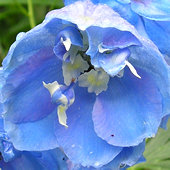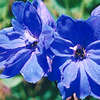This summer I had one of those periodic tidying enthusiasms, and decided to sort through my enormous envelope of plant labels.
I suspected this plant label collection was rather unrepresentative, having been assembled over several years of gardening here. Last year I'd started to attempt to update my computer database that, in another fit of enthusiasm, I'd set up to keep a record of all the plants I bought. The database records had to be altered to take into account the new category of an 'ex-plant'. The labels in the enormous envelope portrayed graphically the rather alarming number of 'ex-plants'.
I collected together the ones that referred to plants I knew to be still in the garden, and on the other side of the kitchen table, the 'ex-plants'. There was also a pile of 'not sure'.
Thankfully, the pile of labels for plants in the garden was considerably bigger than the 'ex' pile. But the ex-pile was still of a worrying size, and 'what a waste of money' was my immediate thought.
Plants become 'ex' for so many reasons. The longer I'm gardening the more suprized I am that any of them manage to grow at all, as they seem to be bombarded by numerous types of wilt, spot, rot, rust and fungus. Every time I listen to Gardeners' Question Time there seems to be another hideous disease identified on some poor unfortunate specimen volunteered by a member of the gardening public. Pippa Greenwood's voice goes a bit doubtful, and you just now she's going to say 'I'm afraid this plant has Scabby Leaf Pox' or 'I don't like to tell you this, but this is the worst case I've seen of Galloping Black-blotch Viral Canker Weevil'.
There's just so many of them. Books about Pests and Diseases make depressing reading, just like medical textbooks do. You think you've got everything in there.
I kept the 'ex-plants' labels to remind me not to waste money on buying too many plants. But I did hide them away in a separate envelope.


